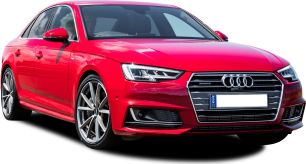There's no doubt that the Mondeo is a chunky monkey. Just get a look at those proportions, it looks like a dense rectangle's worth of car, and that's before you line it up next to something else for perspective.
In this case I sat it next to my Falcon. Once the largest sedan on offer by Ford in Australia, in some ways it looks dwarfed. The Mondeo is taller and just as wide, but not quite as long. A quick comparison of spec sheets proves it's not much lighter either, despite the Falcon sporting a cast-iron engine that's literally twice the size.
The front three-quarter especially makes the Mondeo look tough. The big catfish-esque grille combined with the slimline headlight clusters and bonnet ripples make it look aggressive - like a rolling advertisement for the Mustang.
Head round to the rear three-quarter, however and things get a little… off. The raised dimensions and high rear light features make it look too tall. The 'liftback' roofline does no wonders for the car's proportions either.
It's a shame that after so many decades of Mondeo there is still apparently no way to make that rear-end appealing.
Inside there are also plenty of quirks. While there are some parts that really work, there are also some that don't.
The plush leather seats unique to the Titanium grade are lovely, but they're positioned so high up you'd be forgiven for thinking you were at the helm of an SUV. The sunroof is also so far back it's basically useless for front passengers, yet it eats their headroom (also, it's just a glass roof that doesn't open).
Then there's the switchgear, of which there is an overwhelming amount. You're presented with a sensory assault of buttons and displays, half of which could seemingly be easily offloaded onto the multimedia system. It's an approach that dates an otherwise modern-looking cabin.
Eerily similar to the Falcon, the fan speed and temperature controls aren't dials (a user experience nightmare) but the volume control is… go figure.
Those gripes aside there's plenty to like about the Mondoe cabin. There are soft-touch surfaces everywhere, helping the car live up to its luxury spec and price point, while all the switchgear and interactive parts are solid and tough, just like the Mondeo's big brother, the Ranger.
While the digital dash is way too busy, it presents the relevant information well, and is a good interactive design once you get used to it.
The back seat is a very nice place to be, making full use of that big glass roof, and the rear seats are just as plush as the front ones. If you spend lots of time ferrying friends or family around, it's a strong point for the Mondeo.

